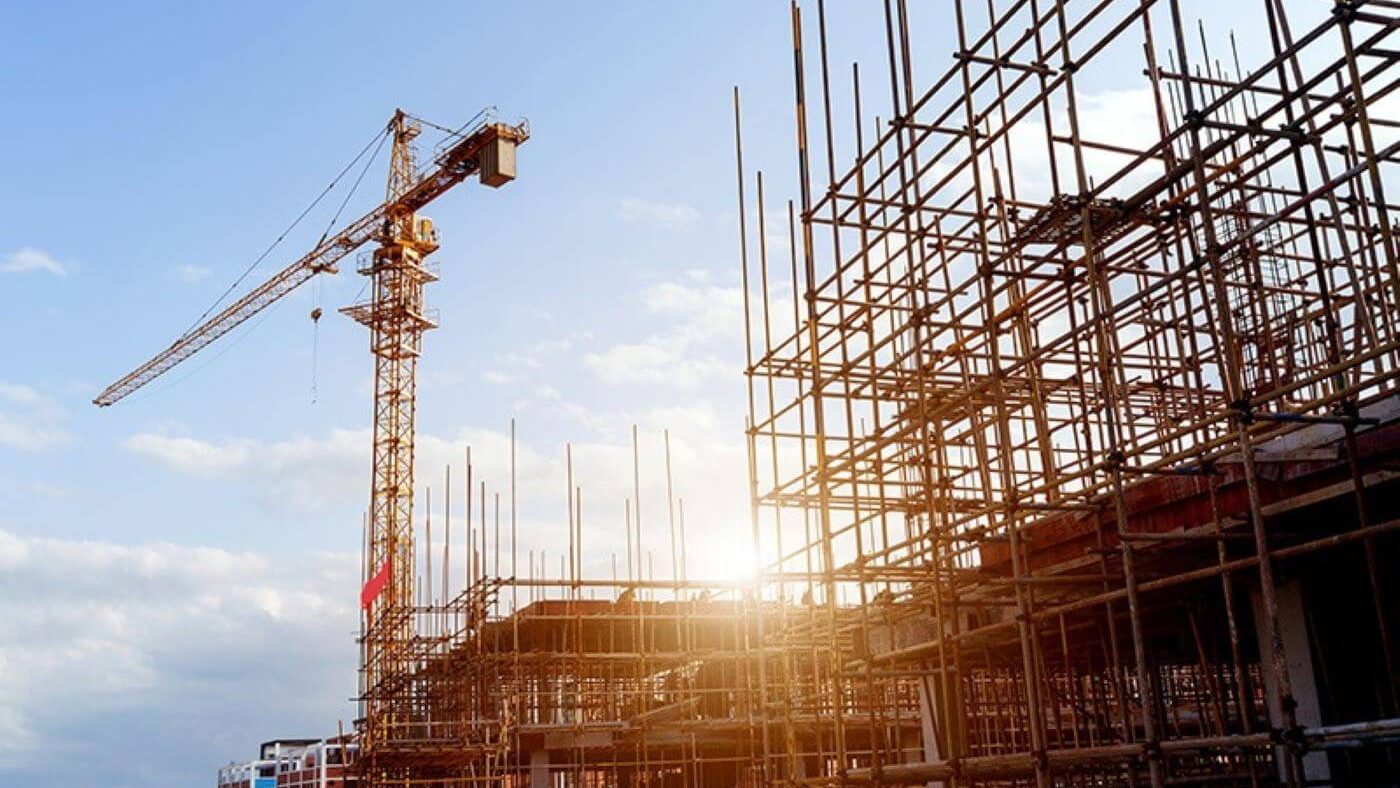The first blog in the “Vertexing Health and Well-Being in Our Built Environments” Series
This blog series will dive deep into the importance of designing buildings that prioritize the wellbeing of their occupants. From incorporating green spaces to optimizing indoor air quality, we will explore the latest research and innovative solutions for creating healthy, sustainable and resilient buildings. Join us on a journey to explore the Well Building Standard of IWBI and how VERTEX is incorporating this groundbreaking framework in building wellness for the 21st century.
Exploring WELL Certification: Enhancing Health and Wellness in the Built Environment
The International Well Building Institute (IWBI) is a leading organization that promotes the health and well-being of occupants in our built environments. Its mission is to advance human health and well-being through the design and operations of our buildings and communities through the WELL Building Standard. Since the launch of the WELL Building Standard in 2013, 2,000+ companies (including over 100 Fortune 500) and over 24,000 projects, have adopted WELL to achieve and promote wellness in their buildings. It is backed by extensive scientific research over the past decade, from a wide range of experts and building scientists around the world. “More than ever before, companies are being held to a higher standard for how they care for their employees and manage the downstream impacts of their products and services. IWBI applies the science in the WELL Building Standard to help organizations meet and exceed industry performance standards to become leaders in health.” – Matthew Trowbridge, M.D., MPH (Chief Medical Officer, International WELL Building Institute).

GROWTH IN SQUARE FOOTAGE OF PROJECTS CERTIFIED BY WELL
(Image provided by the IWBI website)
The WELL Building Standard is a performance-based system for measuring, certifying and monitoring features of buildings that impact human health and well-being. The WELL Building Standard covers ten categories of building performance: Air, Water, Nourishment, Light, Thermal Comfort, Sound, Movement, Mind, Materials and Community. Each of these categories is designed to improve the health and well-being of building occupants by addressing factors such as indoor air quality, water quality, healthy food options, natural light and access to physical activity.

THE TEN CONCEPTS OF THE WELL BUILDING STANDARD
(Image provided by the IWBI website)

EXAMPLES OF THE CONCEPTS
(Image provided by the IWBI website)
The Power of WELL Certification and the Role of WELL AP Professionals
The WELL AP Certification is a globally recognized credential for professionals dedicated to improving the health and well-being of building occupants. By passing a rigorous exam, WELL APs demonstrate their expertise in the WELL Building Standard, which encompasses areas like air and water quality, fitness, nourishment and mental well-being. These certified professionals play a crucial role in guiding projects towards WELL certification. They provide valuable guidance, facilitate collaboration, review documentation, verify performance and promote continuous improvement. With their knowledge and skills, WELL APs streamline the certification process for buildings and help projects meet the stringent standards of the WELL Building Standard.
Projects can achieve WELL Certification by following a thorough and structured process. The journey begins with project registration and the formation of a project team. The team then works on implementing strategies and design features aligned with the WELL Building Standard, addressing various aspects such as air quality, water quality, nourishment, fitness, comfort, and mental well-being. Documentation is prepared to showcase compliance with the standard’s requirements. Once the project is ready, a performance verification is conducted, which may include on-site visits to ensure that the project meets the performance targets outlined by the standard. If the project successfully meets the criteria, it receives WELL certification.
The benefits of WELL Certification for buildings are multi-faceted. Firstly, it demonstrates a commitment to the health and well-being of occupants, fostering a more productive and engaged environment. WELL-certified projects offer improved indoor air quality, access to natural light, spaces designed for physical activity and relaxation, and healthier food options. This contributes to enhanced occupant satisfaction and overall well-being. The importance of the WELL Building Standard and the WELL AP Certification is particularly relevant as offices are bringing people back to work in the wake of the COVID-19 pandemic. The pandemic highlighted the critical role of healthy buildings in maintaining the health and well-being of employees. Research has shown that healthy workplaces can result in reduced absenteeism, increased productivity and improved employee satisfaction. Secondly, WELL Certification enhances marketability, as it differentiates projects in a competitive real estate market. It showcases an organization’s dedication to sustainability and occupant health, attracting tenants, clients and investors who value these principles. Additionally, WELL Certification can lead to long-term cost savings through increased energy efficiency and improved occupant health, resulting in reduced healthcare expenses. Overall, WELL Certification brings tangible benefits to projects, supporting the well-being of occupants, increasing market appeal and promoting sustainable practices.

FOUR CERTIFICATION LEVELS; BRONZE, SILVER, GOLD AND PLATINUM
(Image provided by the IWBI website)
Notable Examples of WELL Certification: Inspiring Healthy and Sustainable Spaces
There are numerous companies and projects that have achieved WELL certification, showcasing their commitment to occupant health and well-being. Here are a few notable examples:
- Etsy Headquarters, New York: Etsy’s global headquarters in Brooklyn, New York, is a WELL Certified Gold project. The building incorporates features such as daylighting, biophilic design elements and fitness amenities to promote employee well-being.
- Haworth Beijing Showroom, China: Haworth, a global leader in workplace furniture and solutions, achieved WELL Platinum certification for its Beijing showroom. The space prioritizes air quality, acoustic comfort and employee wellness through features like advanced air filtration and circadian lighting.
- TD Bank Group, Canada: TD Bank has several WELL-certified projects, including its corporate offices in Toronto and Vancouver. These spaces focus on providing healthy work environments, promoting active lifestyles and encouraging social connections among employees.
- Delos Headquarters, New York: Delos, the pioneering company behind the WELL Building Standard, has its headquarters in New York City, which is WELL Certified Platinum. The space showcases innovative features such as circadian lighting, water filtration systems and active design principles.
- Glumac Shanghai Office, China: Glumac, a sustainable engineering firm, achieved WELL Gold certification for its Shanghai office. The project emphasizes elements like natural daylight, biophilic design and ergonomic workstations to support employee health and well-being.
These are just a few examples of companies and projects that have embraced the WELL Building Standard and obtained WELL certification. Their commitment to creating healthy and sustainable spaces serves as inspiration for future projects and reinforces the importance of prioritizing occupant well-being in the built environment.

DELOS HEADQUARTERS IN NEW YORK, NEW YORK
(Image provided by the IWBI website)
Prioritizing Health and Well-Being: Shaping the Future of Work and Living Spaces
As we look to the future of work and living spaces, it is clear that the health and well-being of employees will continue to be a top priority. The WELL Building Standard and the WELL AP Certification are important tools for professionals and organizations seeking to create healthy buildings and communities. WELL will continue to gain traction as a leading standard. As more companies recognize its significance, they will strive for WELL Certification. Promising advancements in research, technology and design practices will further enhance the WELL Certification process. By prioritizing human health, we can create spaces that promote productivity, happiness and a sustainable future for all.
Next in the Blog Series
In the upcoming blogs, we will dive into each of the ten Core Concepts covered by the WELL Building Standard: Air, Water, Nourishment, Light, Movement, Thermal Comfort, Sound, Materials, Mind and Community. Through informative and insightful articles, we will uncover strategies, best practices, and case studies that demonstrate how these categories can be effectively implemented to enhance occupant health and well-being.
By staying tuned to this blog series, you will gain valuable knowledge and insights that can be applied to your own projects. Together, we can create built environments that foster productivity, happiness, and a sustainable future for all.
To learn more about VERTEX’s Project Advisory services or to speak with a Construction Expert, call 888.298.5162 or submit an inquiry.








